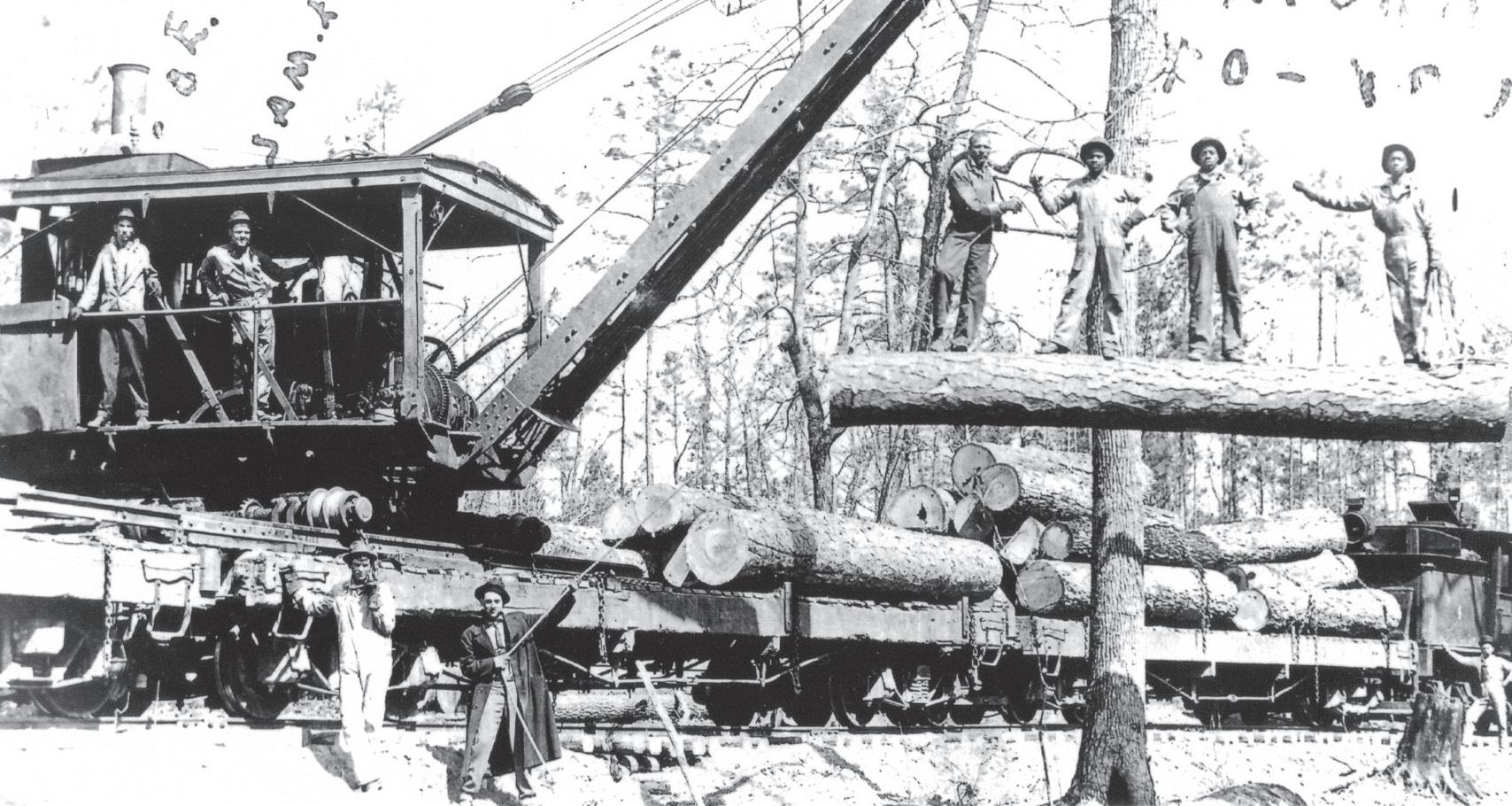

Ruralite
Plumas-Sierra REC line crews use a snowcat to reach a tree that had fallen onto
PSREC’s transmission line. PHOTO BY PSREC SOUTH END LINE CREW FOREMAN MITCH CARR

FEELING REJUVENATED WITH CBD
Everyone feels the hurt as we age, but CBD can help you deal with it
By: Beth Giles
Life really does fly by. Before I knew it, my 60s had arrived, and with them came some new gifts from dear ol’ Mother Nature—frequent knee pain, stress, low energy and sleeplessness. Now, I’m a realist about these things, I knew I wasn’t going to be young and springy forever. But still, with “golden years” nearly on my doorstep, I couldn’t help but feel a little cheated. That is until I found my own secret weapon. Another gift from Mother Nature.
It began a few months back when I was complaining about my aches and pains to my marathon-running granddaughter, Jen. She casually mentioned how she uses CBD rub to help with her joint pain. She said that CBD gave her more focus and clarity throughout the day and that her lingering muscle and joint discomfort no longer bothered her. She even felt comfortable signing up for back-to-back marathons two weekends in a row this year. That made even this self-proclaimed skeptic take notice.
But I still had some concerns. According to one study in the Journal of the American Medical Association, 70% of CBD products didn’t contain the amount of CBD stated on their labels. And, as a consumer, that’s terrifying! If I was going to try CBD, I needed to trust the source through and through. My two-fold research process naturally led me to Zebra CBD. First, I started calling my family and friends. Call me old fashioned but I wanted to know if
there were people whom I trusted (more than anonymous testimonials) who’ve had success using CBD besides my granddaughter.
Secondly, I wanted cold hard facts. Diving deep into the world of CBD research and clinical studies, I came across Emily Gray M.D., a physician at the University of California at San Diego (UCSD) Medical School and medical advisor to Zebra CBD who is researching the effects of CBD. Dr. Gray wrote “early results with CBD have been promising and we have a lot of research underway now. I’ve had several patients using CBD with good success. It’s important that you know your source of CBD and how to use it properly.”
After hearing it from the doctor’s mouth, I returned to my research, asking more people and was amazed by the number of close friends and family who were already on the CBD train. Apparently, I was the only one without a clue! And funny enough, a couple of friends who commented were using the same brand as my granddaughter—Zebra CBD. There was no consensus as to why they were using CBD, but the top reasons given were for muscle & joint discomfort, mood support, sleep support, stress and headaches, as well as supporting overall health & wellness.
Eventually, even the most skeptical of the bunch can be won over. With a trusted CBD source in mind, I decided to give it a go.
When I viewed Zebra CBD’s selection online, I
was impressed by its array of products, including CBD oils called tinctures, topicals, chewable tablets, mints and gummies. After reading on their website that all their products are made with organically-grown hemp, I ordered... and it arrived within 2 days!
The first product I tried was the Rub. Now this stuff was strong. Immediately after rubbing it on my knee, the soothing effects kicked in. It had that familiar menthol cooling effect, which I personally find very relieving. And the best part is, after two weeks of using it, my knee pain no longer affected my daily mobility.
The Zebra Sleep Gummies, on the other hand, had a different but equally positive effect on my body. To take it, the instructions suggest chewing thoroughly. This was simple enough, and the taste was, well, lemony. After about 15 minutes, a sense of calm came over my body. It's hard to describe exactly; it's definitely not a "high" feeling. It's more like an overall sense of relaxation—and then I was out. Needless to say, I slept great and woke up refreshed. I haven’t slept like that in a long time.
While it hasn’t been a catch-all fix to every one of my health issues, it has eased the level and frequency of my aches. And it sure doesn’t seem like a coincidence how rejuvenated I feel. All-in-all, CBD is one of those things that you have to try for yourself. Although I was skeptical at first, I can safely say that I’m now a Zebra CBD fan and that I highly recommend their products. Also, I managed to speak with a Zebra CBD spokesperson willing to provide an exclusive. If you order this month, you’ll receive $10 off your first order by using promo code “RL10” at checkout. Plus, the company offers a 100% No-Hassle, Money-Back Guarantee. You can try it yourself and order Zebra CBD at ZebraCBD.com/CM or at 1-888-762-2699.
Ruralite
April 2024 • Volume 72, No. 4
CEO Michael Shepard
SENIOR VP OF CONTENT Leon Espinoza
EDITORIAL DIRECTOR Mike Teegarden, CCC
DEPUTY EDITORIAL DIRECTOR
Noble Sprayberry
SENIOR EDITOR Jennifer Paton, CCC
ASSISTANT EDITORS Chasity Anderson, CCC; Victoria Hampton, CCC, David Herder CCC
ASSOCIATE EDITORS
Valeri Pearon, Nina Todea
PUBLICATIONS PRODUCTION SR. MANAGER
Elizabeth Beatty
PUBLICATIONS COORDINATOR
Alyssa McDougle
Ruralite (USPS 397-460) is published monthly for members for $4.83 per year, plus postage, by Pioneer Utility Resources Inc., 5625 NE Elam Young Pkwy. Ste. 100, Hillsboro, OR 97124—a not-for-profit Oregon cooperative corporation—to serve the communication needs of 47 consumer-owned electric utilities in Oregon, Washington, Alaska, Idaho, Nevada and California. Preferred periodical postage paid at Hillsboro, Oregon, 97123 and additional mailing offices. © 2024 Pioneer Utility Resources. All rights reserved. Reproduction in whole or in part without written permission is prohibited.
Postmaster Send address changes to Ruralite, 5625 NE Elam Young Pkwy. Ste. 100, Hillsboro, OR 97124-6454
HOW TO CONTACT RURALITE
Subscription services:
Nonmember subscriptions $15 (U.S.) per year; $25 per year (foreign). Prepayment required. Allow 4-8 weeks for first issue. Be sure to identify which local edition you want to receive.
Address Changes:
Utility members, contact your local utility. Subscribers, call us at 503-357-2105 option 3 or email mailingdept@pioneer.coop.
Back issues:
Back issues and extra copies $3. Prepayment required. Supply is limited. Be sure to identify edition, month and year. Call first if ordering back issues to check availability.
To contact Ruralite: Ruralite magazine is published by Pioneer Utility Resources.
P.O. Box 1306, North Plains, OR 97133-1306; 503-357-2105; email: info@pioneer.coop. For more information, visit www.pioneer.coop.
DISPLAY ADVERTISING INQUIRIES
American MainStreet Publications
611 S. Congress Ave., Ste. 504 Austin, TX 78704
800-626-1181 or 512-441-5200

For supplemental and interactive content, search @Ruralite on your favorite social media sites.
Pollinator Power
I like food, maybe a little too much sometimes.
About 35% of the food crops we eat depend on pollinators buzzing and flitting from one plant to the next.
In recent years, at the urging of my beekeeper friends, I have changed my gardening habits to be more bee-friendly. My yard is small, and I know this one act won’t change the world, but I feel good knowing I’m at least contributing to the pollinator ecosystem.

While bees are the most prolific pollinators, butterflies are important contributors. This month on Page 12, you can read about monarch butterflies, which are considered a vulnerable species.
Monarchs only lay their eggs in milkweed plants, which are becoming more scarce in the wild. I tried growing milkweed from seed last year, but my first attempt failed. But I’m stubborn and will try again using plant starts this time. Hopefully, I’ll have better luck. It would be
pretty exciting to have my own crop of monarch butterflies.
Check out our story for ways you can make your yard more pollinator friendly.
Our Up Close feature this month on Page 10 highlights Gwen Trice and her quest to bring to light a former logging community in Northeastern Oregon, where her father and grandfather lived in 1923. Maxville was one of the few places in Oregon where Black people and white people lived and worked together.

Gwen is working to cultivate a healing and educational environment at the site. She also is restoring a historic cabin on-site.
Finally, check out Before You Go on Page 30 to learn how Ruralite readers pitched in to help a school put on a successful Family Math night.
Sincerely,
Mike Teegarden Editorial Director

Meet the Logger’s Daughter
Gwen Trice preserves community through Maxville Heritage Interpretive Center
Up Close, Page 10
Catching Up With Citizen-Scholar Winner
Jacey Taylor
By Emily Compton
Meet Jacey Taylor, a talented individual whose journey from Plumas-Sierra scholarship recipient to aspiring animator illuminates the power of dreams and determination.
Jacey graduated a semester early from Plumas Charter School in 2021 due to earning college credits while in high school. Although she only graduated one semester early, she said she was “still glad to have a small break before college.”
For Jacey, animation is not merely a career path; it is a passion—an avenue through which she can share her unique perspective with the world. Jacey loves the story telling aspect of her animation work.
After graduating from Plumas Charter School in Quincy, Jacey continued her education at Lassen Community College in Susanville where she got an associate
studio arts transfer degree which led her to her next educational endeavor.
While at Cal-State Northridge, Jacey is continuing her education in the arts.
“My major is in arts as an overall, but to be more specific, it’s animation with a focus in 2D,” she says. “I really enjoy telling my own stories through art, and animating is something I really enjoy doing and would love to make it a full-time career.”
As she navigates the intricate world of animation, Jacey finds joy and fulfillment in the creative process. Whether she’s sketching characters, storyboarding scenes or bringing her illustrations to life through digital animation, every moment spent on her craft is a testament to her unwavering dedication and love for the art form.
With sights set on the future, Jacey plans to hone her skills at the University of Central Florida, where she will pursue a master’s degree in animation. This transition will mark a new chapter in her academic journey and be a pivotal step toward becoming a fulltime animator.

Animation is a hard industry to break into, and building a robust portfolio will help set Jacey apart from others in the field.
In addition to completing her bachelor’s degree, Jacey has worked on commission

jobs. She was recently hired at LA Visual Studio, where she will start work part-time while attending school.
In her free time, Jacey enjoys drawing, writing funny stories, playing games with friends and spending time with friends and family. Jacey is working on creating her own video game.
When asked what her superpower would be, Jacey said, “If I could have any superpower, it would have to be shapeshifting. I like the idea of being different creatures and even modeling my own things.”
Plumas-Sierra REC wishes Jacey the best in her endeavors going forward. May her journey from Cal-State Northridge to University of Central Florida be filled with boundless opportunities, endless creativity and success along the way.
Applications for the 2024 Citizen Scholar Scholarships are available online at www.psrec.coop or by calling the PSREC Member Services Department at 530-832-4261 or 800-555-2207. The entry deadline is Friday, April 26.
PSREC Scholarship Winner, Jacey Taylor and Cal-State Northride peer. PHOTO PROVIDED BY JACEY TAYLOR
Senior photo of 2021 PSREC Citizen Scholar Scholarship Winner, Jacey Taylor. PHOTO PROVIDED BY JACEY TAYLOR
TWO $1,000 SCHOLARSHIPS ARE
UP
FOR GRABS
Plumas-Sierra Rural Electric Cooperative and its telecommunications subsidiary, Plumas-Sierra Telecommunications, are offering two $1,000 scholarships.
All interested students are encouraged to apply by Friday, April 26, 2024. Scholarships are open to high school seniors and older students with no upper age limit.
To qualify, the student’s primary residence in Plumas, Lassen, Sierra or Washoe counties must
be supplied with either electric power through PSREC or internet service through Plumas-Sierra Telecommunications.
Applications for the 2024 Citizen Scholar Scholarships are available online at www.psrec.coop or by calling the PSREC Member Services Department at 530-832-4261 or 800-555-2207.
2023 Winners


Apply Today!
Brayden Armstrong William Jessup University
Sophia Dutton California State University, Chico

Staying a Step Ahead of Mother Nature
Electric utilities often rely on technology to manage vegetation
By Jennah Denney
Mother Nature tends to have a mind of her own. Utility power lines are vulnerable to damage from severe storms—particularly fallen trees and limbs, which can lead to power outages. About 50% of outages are caused by overgrown vegetation, which is why electric utilities regularly trim and maintain their local systems.
This starts with significant on-theground labor, including manual data collection, as workers assess the vegetation that needs to be cleared while walking below the infrastructure. Following the trim work, manual verification of its quality and completion is required.
This has been the standard approach for the past few decades. But as extreme weather events increase and digital tools improve, electric utilities are looking to innovative vegetation management methods to improve power reliability for consumers.
With the help of technology, utilities may be able to dispatch trimming crews at the ideal moment and location, preventing additional outages while enhancing productivity, cutting costs and providing better service.
Timely monitoring can help identify infrastructure susceptible to damage. Finding the right technology makes this process more efficient.
Each vegetation management tool has advantages.
Lidar—which stands for light detection and ranging—gives exact, 3D data about the shape of the surface around utility assets. Lidar is a popular way to scan portions of forests to determine the height of trees. The technology doesn’t generally assess plant health but can pair with highresolution multispectral satellite imagery to help define areas of need.
Satellites provide coverage 24 hours a day and can supply two kinds of images: a wide view of the area near utility assets
and a more detailed micro view. Satellite data can often be used in place of other monitoring methods.
With satellite technology, utilities can learn a lot about local vegetation, including:
• Health. Information gathered makes it possible to predict vegetation growth based on real conditions.
• Dryness. This information is valuable for determining the likelihood of a wildfire and how to protect utility infrastructure.
Satellites are always in orbit around the Earth, so data can be updated quickly, in real time. This makes it possible to respond swiftly and precisely.
Today, satellite images can have a spatial resolution to within 1.6 feet, making it easy to spot when vegetation grows in the rights-of-way near power lines and utility equipment.
Typically, satellites speed up the process of inspecting power lines because they provide information for making data-driven
Paired with satellite imagery, lidar technology—which stands for light detection and ranging—can collect detailed, beneficial data on large amounts of vegetation near power lines and other utility assets. PHOTO COURTESY OF SANGRE DE CRISTO ELECTRIC COOPERATIVE

Think Ahead When Planting a Tree
By Scott Flood
“Why can’t they just leave my trees alone?”
Electric utilities are required to document that every piece of equipment and every foot of their power lines are a safe distance from trees and other vegetation. If a tree-trimming crew visited your home, it was likely because your trees were closer to power lines than the rules allow, and your electric utility is legally required to act.
Thinking about what’s above the ground is only part of tree-planting safety. Before you grab a shovel and start digging, contact 811 to make sure you won’t accidentally cut into any underground utility lines. The service sends people to your property to mark the approximate locations of utility lines. Because it can be challenging to pinpoint exact locations, use only hand tools when digging within a few feet of the markings.
decisions about vegetation management.
Electric utilities can also use fixed-wing aircraft and drones to monitor and control the growth of trees and plants near power lines. Drones fly close to equipment, take clear images and provide data to help show how close vegetation is to equipment and check the health of trees.
Many utilities use drones with cameras. When it comes to taking care of surrounding vegetation, drones are often used for detailed surveys rather than large-scale monitoring like satellites.
Once lidar or satellites—often together—have collected data on a large amount of vegetation near power lines, drones can be used to inspect a single area and do all the necessary checks.
Public power utilities place a high focus on vegetation management. It is the most crucial tool for reducing the likelihood of power outages. A thorough understanding of the vegetation’s past, present and projected future is essential for a successful approach to reducing these risks.
The growth of lidar, drone and satellite data presents an opportunity to close the loop with continual data-driven vegetation management intelligence and increase the power line system’s dependability and safety. In the end, all three technologies for managing vegetation serve different purposes, and electric utilities choose the options that work best for them. n
The last thing your utility wants to do is alter or remove a prized part of your landscaping. It would rather help you avoid conflict between electricity and greenery altogether. How? By reminding you to plant your new trees, shrubs or other vegetation where they won’t grow into power lines or other electric equipment. Whether you want to plant a tree, a decorative shrub or something else, it’s helpful to consider how it will grow during the next 20 or 30 years. Consider the eventual height and how wide the canopy of branches is likely to spread.
For example, even small trees and shrubs should be planted at least 20 feet from power lines. If you can’t plant that far away, make sure you choose a species that won’t top out at more than 15 feet high.
Trees that will be 40 feet high or less should be at least 25 feet from electricity. Larger trees should be at least 50 feet away.
Plant Trees Safely
Trees aren’t the only type of vegetation requiring thoughtful planting. If there’s a padmounted transformer in your yard, you might be tempted to hide it behind colorful flowers and neatly trimmed shrubs.
Unfortunately, if there’s a problem, crews need clear access to the transformer. That’s why it’s always a good idea to keep plantings at least 10 feet from the transformer’s doors and at least 4 feet from its sides. Otherwise, crews responding to a power problem may need to remove part of your landscaping.
Finally, if you notice your trees or other vegetation have grown dangerously close to power lines or equipment, don’t try to trim them on your own. Let your local electric utility know, or hire a professional arborist. Tree trimming is more dangerous than most people realize, and you don’t want to find yourself in an emergency room—or be the person who plunges your neighbors into the dark.
Drones can take clear images of electric infrastructure and provide data to monitor vegetation growth. PHOTO BY AMANDA JEAN FINNERTY

We know you’re itching to plant your garden and maybe add a shrub or two. But don’t get ahead of yourself. First, you need to call 811 to have utility lines marked.
Tell the operator where you're planning to dig and what type of work you’ll be doing. The affected local utilities will send a locator to your property, free of charge. Then you’ll know what’s below and be able to dig safely without causing damage.









The answer: Although tremendous strides have been made in


















those cost reductions have not been passed on to












If











Meet the Logger’s Daughter
Gwen Trice preserves community through Maxville Heritage Interpretive Center
Story by Chiara Profenna

In the mountains of Northeastern Oregon lie what remains of an abandoned timber town. Once the most populous community in Wallowa County, Maxville now comprises a single log cabin atop 96 acres of empty land. Its past—nearly lost to history—echoes through the efforts of Gwen Trice, the founder and executive director of Maxville Heritage Interpretive Center in Joseph, Oregon.
In the past decade, Gwen has transformed Maxville into more than just a historical site. She has created a space where the past comes alive, and the spirit of community thrives.
Revealing an Untold Story
Gwen’s journey to preserve Maxville’s history began in 2003 when she discovered her heritage in connection with the township.
“I found out my father and grandfather were in the group of the first African Americans that came out by boxcar from Pine Bluff, Arkansas, in 1923,” Gwen says.
This discovery shocked Gwen, who knew her father, Lafayette “Lucky” Trice, as a respected businessman in La Grande, Oregon. After the revelation, Gwen uprooted her life in Seattle to return to Eastern Oregon—where she was raised—to reconnect with her past.
“I realized having grown up in this space where Black history wasn’t told … we weren’t a part of the narrative,” Gwen says. “I ended up moving to Wallowa County, where this history resides, and just really took up the gauntlet, more for myself. I really wanted to find out about my history.”
Gwen took to Maxville’s neighboring towns in search of stories. She began collecting and preserving the personal accounts of elders. Her project became the Oregon Public Broadcasting documentary, “The Logger’s Daughter,” which explores the history of Maxville through interviews and collected artifacts.
Images from the center display some of the rich history of the town. This photo captures Greek and Black loggers working in Maxville.
PHOTO COURTESY OF THE MAXVILLE HERITAGE INTERPRETIVE CENTER

The documentary’s first Oregon viewing was at the senior center in Wallowa. There was an overwhelming turnout, surpassing the room’s capacity. Upon seeing the elders weeping in the front row, Gwen realized how important it was to tell the story of Maxville in its entirety.
“I knew that it was bigger than me coming back, writing on screenplays and doing my family history,” Gwen says. “It was a history of a community. I had no idea how much bigger it would get.”
100 Years of Maxville
Not many Oregonians have heard of Maxville. The town of about 400 people was founded in 1923 by the Bowman-Hicks Lumber Co., which recruited loggers from the South to work in the timber industry. Unlike most lumber towns, Black and white loggers worked side by side.
The segregated township was one of the only places in Oregon where Black families lived due to Oregon’s exclusionary laws at the time. Despite the laws and segregation practices, the town was known for breaking down the barriers of race. Gwen says community members relied on each other and coexisted peacefully.
“(Maxville) is a place where my family came because they got to make more money and had the hope of possibly coming out of a space that we were being hung from trees in the South,” she says.
For a decade, Maxville prospered as a major logging town. But in 1933, it fell victim to the Great Depression, and the land was quickly vacated. Many families moved to nearby Wallowa or La Grande. The history of the once-bustling community faded from memory during the next few decades.


One hundred years later, Maxville is reentering the Oregon landscape thanks to Gwen’s efforts and advocacy. With the help of Hancock Timber, Eastern Oregon University and Clatsop Community College, Gwen is restoring the authentic cabin that remains on the townsite. She hopes to establish the site as a visitors center and permanent exhibition of the Maxville Heritage Interpretive Center.
Interpreting the History of Maxville
With her materials collected and the groundwork started, Gwen began to create the Maxville Heritage Interpretive Center in 2008. Since then, she has worked tirelessly to cultivate an educational and healing environment.
“To tell this inclusive story—the good, the bad, the ugly—in a truthful and transparent way is extremely healing and helpful,” Gwen says. “And it’s difficult. Some days are better than others.”
Gwen says the center is a healing place for not just for Black people but also allies.
“We’re creating a trauma and healing program right now,” she says. “Trauma and healing in the environment and making the connection to a lot of us that have been marginalized in one way or another.”
The program is in the early stages of development. As Gwen expands the center, she hopes visitors see it as a sacred and bright place for everyone.
“We all have different needs,” Gwen says. “But I hope that it provides a bridge to whatever healing they may be looking for.” n
Maxville Heritage Interpretive Center is at 103 N. Main St. in Joseph, Oregon.

CLOCKWISE FROM LEFT: Gwen stands proudly in front of a historic photo of the Black and white loggers from Maxville, where her father is pictured in the back row, fourth from the left. PHOTO BY CHIARA PROFENNA The interior of the Maxville Heritage Interpretive Center features a curated collection of photographs from Maxville, artistic renderings of the town and personal artifacts from families, painting a vivid portrait of life in Maxville. The historic Maxville cabin is being restored to create a new expansion for the center. Since the project began, the site has been nominated for the National Register of Historic Places. PHOTO COURTESY OF THE MAXVILLE HERITAGE INTERPRETIVE CENTER

Majestic M onarchs: Royalty Among
Pollinators
By Pamela A. Keene
ADOBE STOCK IMAGE BY BAZZIBA

When it comes to Western monarch butterflies, the statistics are alarming. Since the 1990s, their population has declined by 99%. But there’s good news for these vibrant butterflies that migrate from the Pacific Northwest to Southern California.
“Our census in 2023 showed a decline in the Western monarch population, but the decrease is not quite as severe as it was five years ago,” says Emma Pelton, senior conservation biologist with the Xerces Society, whose mission is to protect invertebrates and their habitats. “Our organization has been conducting annual monarch counts for the past 25 years, typically around Thanksgiving, and we have seen a steady decline.”
She attributes the reduction of the number of Western monarchs to loss of habitat from development, overuse of fertilizers and pesticides, and severe extremes in temperatures. Migrating north each spring from Southern California to their summer breeding grounds west of the Rocky Mountains, the butterflies seek shelter and adequate food for their larvae, which will become the next generation of adult monarchs.
“Places to feed, lay their eggs and protect themselves from predators are vanishing as native and natural habitats disappear,” Emma says. “It’s up to all of us to be aware of the monarchs’ dwindling population and to each do our part to help them survive and thrive.”
Monarchs rely on milkweed, laying their eggs on the underside of the leaves. Those eggs hatch into small, gray larvae, becoming the plump yellow, black and white caterpillars that feed on milkweed.
“Milkweed is the sole host plant for monarchs,” Emma says. “Once the eggs hatch into caterpillars, they can literally strip the plant of all its foliage, sometimes in less than a day. However, if the butterflies can’t find milkweed, they don’t have a place to lay their eggs. The caterpillars won’t hatch and morph into more adult monarchs.”
Butterflies join wasps, bees and birds as pollinators.
“If it weren’t for pollinators, humans would have a lot less variety in their diet because one of every three bites of goods we consume is the result of pollinators,” says Lora Morandin, associate director of Pollinator Partnership, based in San Francisco. “Monarchs are great ambassadors because they are colorful, showy and attract our attention. They’re also a gateway to learning about insects and other creatures that pollinate.”
Working globally, Pollinator Partnership manages North America’s annual Pollinator Week, slated for June 17-23, to raise awareness for all pollinators. A robust tool kit in multiple languages has been developed for Pollinator Week to be used by individuals, organizations and classrooms. The information can be found at pollinator.org.
“We can all help pollinators in some way,” Lora says. “The website offers extensive information that ranges from bee-friendly farming and gardening guidelines to responsible use of pesticides. We encourage the public to explore our website and adopt practices that will help pollinators, people and our planet.”

How You Can Help: Plant a Pollinator Garden
By Pamela A. Keene
From butterflies and bees to insects and birds, pollinators help feed the world. But they need human support to do their jobs.
“The best way to help pollinators is to plant a pollinator garden,” says Stephanie Hazen, a retired veterinarian and master gardener in Salem, Oregon. “That way, you’re helping provide pollinators a source of food, a place to nest and shelter from other predators.”
Stephanie says she started a new mission when she retired: focus on pollinators and native gardening, growing trees, shrubs, perennials and nonhybrid plants adapted to specific climates, soil conditions and environments.
“When you choose plants that are native to your area, you’ll be supporting the groups of insects, birds, bees and butterflies common where you live,” she says. “These creatures have four-season relationships with plants, and what better way to feed this symbiotic relationship than to include plants that naturally grow where you live? The pollinators will be attracted to them all year long.”
Stephanie recommends a mixture of plants that provide four-season interest to help pollinators.
“Pollinators need more than just blossoms in the spring, summer and fall to thrive,” she says. “Perennials, such as evening primrose, goldenrod and yarrow, are excellent choices. Once they bloom, the spent foliage and the hollow flower stems can become shelter for insects.”
Stephanie also suggests planting milkweed for Western monarchs.
“These beautiful butterflies rely on milkweed as their only host plant,” she says. “They lay their eggs on milkweed, and when the larvae hatch, they will feed on the leaves as they grow into caterpillars.”
A perennial garden should provide shelter and a shallow water source as well. Sources for native plants include local nurseries, local plant sales and various states’ Native Plant Societies. Some states’ Soil and Water Conservation Districts hold native plant sales as well. Each state’s Cooperative Extension Service, managed through land-grant universities, offers detailed pamphlets, plant lists and how-to publications that are free to read online or download.
“Anyone can add pollinator attractors to their landscapes, even if you live in an apartment or a condominium,” Stephanie says. “All it takes is a planter with a few flowering plants, and you’re all set.”


Pollinators in the Classroom

pollinator gardens at the school.
“In 2021, we began the garden program with two second grade classes, and the project has grown to six gardens maintained by three second grade and three fourth grade classes,” Julia says. “Each of the classes has time devoted to insects, and the gardens are filled with red ladybugs, praying mantis, earwigs and green lacewings, which feed on harmful bugs, such as aphids. Butterflies flit in and out and feed on the nectar of native plants.”
This year, Oregon State University graduate student Ashley Hall has joined the team as an intern for her environmental sciences thesis, focused on monarchs, including developing curriculum.
“Last September, Ashley was able to secure caterpillars for the students to raise and release after they morphed into butterflies,” Julia says. “Ashley also received a Bright Ideas grant from CoosCurry Electric Cooperative that was used to purchase educational supplies, butterfly enclosures, bug boxes and magnifying glasses.”
Community support also comes from Brookings Oregon Monarch Advocates, with master gardener volunteers as leaders.
Across the country, students participate in school gardening activities, growing fruits and vegetables, and studying the importance of pollinators.
In Brookings, Oregon, an original school garden from the early 2000s at Kalmiopsis Elementary School sees new life as a teaching tool. With a group of dedicated teachers, students and volunteers, students learn about where their food comes from and the vital roles of insects and other pollinators in feeding humans.
“Teaching youngsters about cultivating plants from an early age can help instill a love of gardening that will last them their whole lives,” says Julia Bott, who provides staff support for school programs through the Master Gardeners of Oregon State Extension.
Julia worked with volunteers and teachers to revive the
“The pollinator garden has become a focal point of our school and an educational complement to growing fruits, vegetables and flowers here,” Julia says. “At first, when some of the students saw a bug, they’d scream and take off running. Now, they’re learning about the benefits of insects and appreciate them more.”
Across North America, the profile of monarch butterflies and other pollinators is rising through environmental organizations, conservation groups and initiatives such as National Pollinator Week each June and the November Western Monarch Count.
“Helping preserve our pollinator habitats and protect these vital insects can be everyone’s mission,” Lora says. “Whether you volunteer for a community project, plant more natives in your landscape or put several perennials in a container on your deck or porch, you’re doing your part. Every little bit helps.” n
CLOCKWISE FROM TOP LEFT: A monarch caterpillar lives its entire life on milkweed. A tagged monarch visits its host plant, showy milkweed. PHOTOS BY STEPHANIE HAZEN A monarch butterfly emerges from its chrysalis.
PHOTO BY PIXABAY

Protecting Pollinators
Sends a Message
By Pamela A. Keene
Think about the possibilities. Electric utilities manage miles of transmission lines across the areas they serve. What if the land within those rights-of-way could create better food sources, shelter and protection for pollinators?
That’s exactly what the Bonneville Power Administration has done in Portland, Oregon’s Forest Park—one of the largest urban parks in the country—through a multiyear collaboration with Portland Parks and Recreation and Metro, a regional planning agency. By improving the land beneath power line rights-of-way in the 5,200acre park, about 67 acres of habitat now provide better nesting sites, shelter and food sources for pollinators.
Begun in 2016, the Forest Park project has increased pollinators along the rights-of-way while reducing the company’s maintenance costs. The initiative speaks to sustainability, environmental stewardship and community involvement.
“Pollinators are crucial to the environment and to the very food we eat,” says Nancy Wittpenn, BPA environmental protection specialist and a leader in BPA’s Pollinator Workgroup. “However, many people are not aware of the benefits butterflies, beetles, bees and other pollinators provide, so we wanted to involve our employees in education and activities to learn more.”
In 2018, the agency created its first Pollinator Workgroup.
“The Pollinator Workgroup formalized what some BPA staff had already been working on,” Nancy says. “Today, our Pollinator Workgroup has 20 or so members who plan events and activities for employees during National Pollinator Week, create educational opportunities and design hands-on projects to protect and support pollinators.”
Activities have included installing temporary mason bee houses at BPA facilities, promoting the weeklong National Pollinator Week each June and sponsoring speakers to educate BPA staff about the importance and benefits of pollinators.
Projects have included a monarch butterfly mapping program, native plant selection and advice for landscape design at BPA facilities, creating pollinator-friendly management best practices used by several groups within BPA, and partnerships to replicate the Forest Park model in other BPA rights-of-way.
In 2023, BPA received national recognition for its work in Forest Park through the Pollinator Electric Power Award from the North American Pollinator Protection Campaign. Nancy received the 2021



CLOCKWISE FROM TOP: The Bonneville Power Administration created a workgroup to organize and plan pollinator events. BPA's Nancy Wittpenn is an award-winning leader of BPA’s Pollinator Workgroup. Pollinators at work ensure our plants continue to flourish. PHOTOS COURTESY OF BONNEVILLE POWER ADMINISTRATION, AMBER BARNES AND POLLINATOR PARTNERSHIP

Power Delivery and Utilization Technology Transfer Award for her contributions to a documentary about pollinators. The Electric Power Research Institute produced the documentary as part of its Powerin-Pollinators initiative.
What has driven BPA’s commitment to pollinators?
“Our agency is in a very unique position to support pollinators while continuing to be effective environmental stewards,” Nancy says.
“BPA’s leadership and employees have made a commitment to pollinator survival, and this commitment has become an important part of our sustainability culture.
“We’re working within the organization, but many of our individual employees and their families are supporting pollinators in their own home landscapes and communities. It’s not only a win-win for BPA and the environment, but for the communities we serve, our customers and stakeholders, our employees and their families.”
Eggstraordinary EATS
Poached Egg Tostadas With Avocado-Tomatillo Salsa
Nonstick cooking spray
4 6-inch corn tortillas
4 cups water
Salsa
1 medium avocado, diced
1 medium Anaheim or poblano pepper, seeds and ribs discarded, diced
1 medium tomatillo, papery husk discarded, washed and diced
1/2 medium tomato, diced

1 tablespoon white vinegar
4 large eggs
1/4 cup diced red onion
1/4 cup chopped fresh cilantro
2 tablespoons fresh lime juice
1 medium garlic clove, minced
1/8 teaspoon salt
Heat oven to 400 F. Line baking sheet with aluminum foil. Lightly spray foil with nonstick cooking spray. Arrange tortillas in a single layer on foil. Lightly spray tortillas with nonstick cooking spray. Using a fork, pierce tortillas to prevent them from filling with air. Bake for 5 to 6 minutes on each side or until golden brown. Transfer to serving plates.
In a large skillet over high heat, bring water and vinegar to a boil.
Once water is boiling, reduce heat and simmer. Break egg into a cup, then carefully slip egg into simmering water. Repeat with remaining eggs, avoiding eggs touching in water. Simmer for 3 to 5 minutes, or until egg whites are completely set and yolks are beginning to set but aren’t hard. Using a slotted spoon, remove the eggs to a plate.
To make the salsa: In a medium bowl, gently stir together avocado, pepper, tomatillo, tomato, red onion, cilantro, lime juice, garlic and salt. Spoon onto the tostadas, then top each tostada with an egg. Recipe and photo source: American Heart Association
Herbed Spanish Omelet
1 pound potatoes, peeled and diced or shredded
2 tablespoons extra-virgin olive oil
1/2 cup diced red onion
2 cloves garlic, minced
4 large whole eggs, lightly beaten
2 egg whites, lightly beaten
2 tablespoons finely chopped fresh parsley
2 tablespoons finely chopped fresh basil
2 tablespoons finely chopped fresh chives
Salt, to taste
Fresh parsley sprigs, for garnish
Place potatoes in a large pan. Cover with water. Bring to a boil and cook, uncovered, for 3 minutes. Remove from heat. Cover. Let stand for about 10 minutes or until potatoes are tender. Drain well.
Heat oil in a deep, 10-inch nonstick skillet over medium heat. Add onion and garlic. Cook for about 8 minutes, stirring occasionally. Add potatoes and cook for 5 minutes.
Combine whole eggs and egg whites. Stir in parsley, basil and chives. Season with salt, to taste. Pour mixture over potatoes in the hot skillet. Reduce heat and cook, uncovered, for about 10 minutes or until the bottom of the omelet is golden.
If desired, brown the top under a broiler. Garnish with fresh parsley sprigs.
Source: culinary.net
Breakfast Burrito
2 teaspoons canola oil
1 small red onion, diced
1 red bell pepper, seeded and diced
1 can black beans, drained and rinsed
1/4 teaspoon red pepper flakes
Salt, to taste
Pepper, to taste
4 eggs
4 egg whites
1/2 cup shredded pepper jack cheese
Nonstick cooking spray
4 flour tortillas
1/4 cup sour cream
1/4 cup salsa
1 large tomato, seeded and diced
1 avocado, sliced Hot sauce
In a large skillet, heat canola oil over medium heat. Add red onion and red bell pepper. Cook for 8 minutes. Add black beans and red pepper flakes. Cook for 3 minutes. Season with salt and pepper, to taste. Transfer to dish. In a medium bowl, whisk eggs and egg whites. Stir in cheese until combined. Heat a large skillet over low heat. Add egg mixture and scramble for 3 minutes or until cooked through.
Spread sour cream over the tortilla. Spread salsa over sour cream. Spoon 1/4 bean mixture over salsa. Spoon 1/4 scrambled eggs over the bean mixture. Top with diced tomatoes and avocado. Drizzle with hot sauce, if desired. Roll up burrito. Repeat three times with the remaining ingredients.
Source: culinary.net
Poblano Frittata
4 large eggs
1/4 cup fat-free milk
2 tablespoons chopped fresh cilantro
1 teaspoon olive oil
2 medium poblano peppers, seeds and ribs discarded, chopped
2 cups frozen corn, thawed
2 medium green onions, chopped
1/4 cup finely shredded cotija cheese or crumbled queso fresco
1 medium tomato, chopped
1/4 cup fat-free sour cream
In a medium bowl, whisk eggs, milk and cilantro. Heat oil in a medium skillet over medium heat, swirling to coat the bottom of the skillet. Cook poblano peppers for 3 minutes or until browning on edges, stirring frequently. Stir in corn and green onion. Reduce heat to mediumlow. Carefully pour in egg mixture. Cook, covered, for 10 minutes, or until the mixture is just set on the edges and still soft in the center. Avoid overcooking. Remove from heat. Sprinkle with cheese. Cut into eight wedges. Top with tomatoes and sour cream.
Source: American Heart Association
Sweet Potato Hash With Eggs
2 teaspoons canola oil
1/2 medium onion, chopped
4 medium sweet potatoes, peeled and cut into 1/2-inch cubes
1/2 medium red or green bell pepper, chopped
2/3 cup fat-free, low-sodium vegetable broth
2 teaspoons minced garlic
2 teaspoons smoked paprika
1 teaspoon ground cumin
1/2 teaspoon dried thyme, crumbled
1/2 teaspoon coarsely ground pepper
1/8 teaspoon salt
4 large eggs
Hot pepper sauce
Heat oil in an electric pressure cooker set on saute. Cook onion for 3 minutes or until soft, stirring frequently. Turn off the pressure cooker.
Stir in potatoes, bell pepper, broth, garlic, paprika, cumin, thyme, pepper and salt. Secure lid. Cook on high pressure for 3 minutes. Quickly release pressure. Turn off the pressure cooker.
Remove the pressure cooker lid. Crack one egg into a small bowl. Using the back of a spoon, make a small well in potatoes. Slip the egg into the well. Repeat with the remaining eggs, making separate wells for each egg. Secure the lid with the pressure vent open. Saute for 2 minutes. Let stand on the keep-warm setting for 2 minutes or until eggs are cooked to desired consistency.
Serve hash sprinkled with a dash of hot pepper sauce.
Source: American Heart Association
Books/Magazines
Looking to discover if anyone has old Robert Howard authored books (Conan and/or King Kull) for sale at a reasonable price. I will pay to ship. Thanks.
Mike Goodpaster
270 Old Stage Road Goldendale, WA 98620
Crafts/Hobbies
Senior citizen seeks to rekindle childhood love affair with stamps. I am looking for stamp collections: 1950s or earlier, U.S. or foreign, loose or in albums, and old envelopes and postcards with stamps, etc. Thank you.
Norman Allen P.O. Box 70 Janesville, CA 96114 woodsmit@psln.com
Hello! I live 50 miles from town, and I’m looking for buttons, especially old buttons. If you (or any family members) have any, I’d appreciate them deeply. Thank you very much.
Ana Howard 61380 Highway 129 Anatone, WA 99401
Looking for all things loom, yarns of any sorts. Plastic pegged looms, storage bags. Thank you in advance.
Tanya Dronoff
P.O. Box 270693 Susanville, CA 96127
Milestones
My aunt, Adrian Lisker, turns 100 this month. She worked at the Lower Westchester Y in Mount Vernon, New York, for more than 30 years. She helped several thousands of people with child care and other programs. She helped raise me as a child to be a kind and loving person and to help people in need. Please send her birthday cards to 312 Clairmont Ave., Mount Vernon, NY 10552. Thank you for helping my aunt celebrate this monumental event in her life.
Seth Goldstein Cannon Beach, Oregon
My Aunt Margaret will have her 90th birthday this month. I believe she would thoroughly enjoy and be very surprised to receive cards celebrating this milestone birthday. It would make her day very special. Thank you in advance for your consideration and generosity. Please send cards to Margaret McLaughlin, 401 NW Johns Lane, Pendleton, OR 97801.
Ron Kopp
Condon, Oregon
Odds
As the owner of the former Ochoco Grange Hall (#741) in Prineville, Oregon, I would dearly love to hear from anyone willing to share their personal experiences, knowledge and memories of this beautiful and historic property. It would be fun to learn more about the history of the property from people who have experienced it firsthand. Please include a phone number and/or email address. Thank you.
Rose Cribbs
P.O. Box 175 Wallowa, OR 97885
Thanks
Irene Wolters, of Osburn, Idaho, turned 100 on October 31. Throughout October, she received more than 472 birthday cards. Irene expressed to me how much the cards meant to her and how happy they made her the whole month long. You just never realize what an impact you can make on someone’s life by just showing kindness and that they are not forgotten. Thank you so very much for the love and remembrance of my precious friend. May God bless you all.
Marilyn Burch Priest River, Idaho
Thank you so very much for all the wonderful buttons I received in the mail. It was such a surprise. I am still needing large red and orange buttons to make my daughter the octopus for her graduation.
Kim Koester Fairbanks, Alaska
I’m overwhelmed by the generosity and kindness shown by readers over the past six weeks in recognition of my 100th birthday. I not only received beautiful birthday cards, but also notification from agencies for contributions throughout the entire Western United States, as well as from New York City, Alaska and Hawaii. Many writers shared their life stories, and I read them as if I was catching up with a lifelong friend. Thank you ever so much for making my 100th birthday a true once-in-a-lifetime event.
Lorraine Martin Corvallis, Oregon
Happy Earth Day!
Submitting Requests Is Free
Send your request (no attachments) to readerexchange@ruralite.org or mail to Reader Exchange, 5625 NE Elam Young Parkway, Suite 100, Hillsboro, OR 97124. Fill in the subject line with Reader Exchange.
Acceptance, scheduling and editing are at the editor’s discretion. Single requests only, please. No duplicates.
Submissions are handled firstcome, first-served as space allows. We cannot honor every request.
Please affirm you have authorization from all appropriate parties before submitting. By submitting, you indemnify Reader Exchange, Pioneer Utility Resources Inc., its officers, directors, employees, utility clients and insurers from all legal liability incurred by the publication of information.
We no longer accept pen pal requests. You may submit a pen pal request as a Marketplace ad (pricing applies).
When submitting a milestone request, please send it at least two months before the milestone.
Phone numbers are not published. Email addresses are if they are part of the ad, but you must include a postal address.
Requests must include the name and address of the electric utility that provides your magazine.


— Darlene & Jack B., CA A Better Way to hearTV®
“Now Jack can control the volume on his TV•Ears while I set the TV volume or mute it for complete quiet. Once again, he can understand every word and we can watch our favorite TV shows together.”

Doctor recommended TV•Ears has helped millions of people with hearing loss enjoy their favorite television shows, movies and streaming content without disturbing others.
The Voice Clarifying Technology® reduces background noise and clarifies hard to hear television dialog making voices and words understandable. 120db of volume makes TV•Ears the most powerful television listening system on the market!
Quiet TV mode lets others mute the television or set the volume to their preferred level while you listen as loud as you want on the headset.























Look up at cliffs and waterfalls in California at
Yosemite National Park

What Is It?
Home to huge waterfalls and cliff faces, Yosemite National Park is one of the country’s most visited national parks. Almost all of the California park’s 747,956 acres are classified as wilderness.
Water Falls
Yosemite is home to many waterfalls. Many of the falls flow heaviest in the spring—specifically May or June. Yosemite Falls is one of the largest falls, with a descent of almost a halfmile over three stages. Horsetail Fall, pictured, typically flows December through April, but can look as if it turns to lava when it catches the light of February sunsets.
Ground Rises
Many cliffs are interesting even without a waterfall. El Capitan is a rock face that rises 3,000 feet over Yosemite Valley. It is a favorite spot for rock climbers. Half Dome is even taller, reaching 5,000 feet above the valley. Half Dome is a batholith—an extrusion from Earth’s crust— visible from most of the eastern half of the Valley.
History
Yosemite was America’s third national park, designated by Congress in 1880. The Yosemite Valley and Mariposa Grove of Giant Sequoias were protected earlier, in 1864, by President Abraham Lincoln. This protection set aside the lands for public use, resort and recreation, and was the first place the United States preserved for such goals.
More Information
Yosemite National Park is heavily visited, and some days require reservations to visit. Plan ahead to see if you need a reservation for your trip. To start planning, visit www.nps.gov/yose or call 209-372-020.
ADOBE STOCK PHOTO BY
PERRY GALLAGHER/ WIRESTOCK







Our Invisible Heroes
By Dave LaBelle
They scrub and vacuum our floors, clean our desks and windows and toilets. But we don’t really see them, even when we watch them working.
These are the invisible heros.
I recently learned that 87-year-old Shirley Vorwald was still washing dishes and cleaning at a nearby elementary school, as she had also done

Renowned author, photographer and lecturer Dave LaBelle has captured special moments for more than half a century. For more of his writings, visit davidlabelle.com and bridgesandangels.wordpress.com.
the past 48 years.
When I asked about Shirley from those who knew her well, all agreed she was a tireless worker and charitable giver. But they warned she would never let me do a story on her because “she is an introvert and is not likely to talk with you.”
They were wrong, at least about talking to me.
Shirley was cordial and talkative, and even invited me into her small home, showing me every detail—living room, bathroom, bedroom, kitchen, even the smaller-than-standard oven in which she bakes hundreds of pies each year. Besides holding down at least two jobs most of her life, she loves to bake pies for people.
In fact, some only know her as the pie lady.
Never married, she says with no bitterness, “My dad didn’t believe in marriage. He didn’t want to lose his help on the farm.”
Shirley is the last of nine children. Her brother, Jerry, died recently at age 92. The day before Christmas, she baked him a birthday cake he never got to eat.
“He was in bed. He could see it but he couldn’t eat it,” she shares.
She is content. Working has been and is her life since growing up on a farm. At a time in life when most count the days to retirement, Shirley just wants to keep working. n

LEFT: NIKON D800, 50mm lens ISO 2000, f/9 at 1/60
ABOVE: NIKON D800, 31mm lens ISO 2000, f/3.5 at 1/250
Reader Challenge
Find an unseen hero in your community and shine a light on them. Explain to them that you see and appreciate them for what they do. You might have to persuade them since these invisible people can be shy. Honest, caring persistence can crumble those walls of distrust. Ask if you can interview them and do a portrait or even a short story about them. It is often easier to get shy people to talk than agree to be photographed, so talk first before asking about pictures.
Email your best image (just one, please) with caption information, including an explanation of how it affects you, to GPH@pur.coop. We may share submissions on our website and social media channels.
Shirley Vorwald is dedicated to her work at a local elementary school, even after 48 years of cleaning. PHOTOS BY DAVE LABELLE


















Manager’s Message
Continued from page 32
In PSREC’s service territory and across the country, an electric co-op lineworker’s mindset of helping others often extends beyond their commitment to their work and into their communities.
Given the dedication of PSREC’s lineworkers—both on and off the job, and especially with the onslaught of storms throughout February and March—I encourage you to take a moment to acknowledge the many contributions they make to our community.
Telecommunications
As mentioned last month, we are delighted to share with our fiber-optic customers that we are increasing our package speeds.
The Basic Package is $79 (no change) and will run at speeds up to 500 Mbps symmetrical, meaning the same speeds up and down. The Family package is $99 (no change) and will run at speeds up to 1 gigabit per second symmetrical. These changes are effective April 1 and will happen automatically. If you have any questions, or would like to make changes to your package, please call 530-832-4126.
The great news on the award for A-15 is detailed above. In addition, PST crews finished construction of our Scott Road grant. If you are in the grant area, keep an eye out for a flyer from PST and call 530-832-4126 to schedule your installation.
Due to a late winter this year, our crews have been able to make significant work on our South Lassen grant. If you would like to get on the wait list for this grant, call 530-832-4126.
PST is continuing to look at all broadband deployment grant options at the state and federal levels this year. Community and member support can play an important role in grant applications, and we may need your help documenting the need for broadband deployment in your area if plan to apply for a grant.
In the coming months, we expect to hear if PST was awarded the 10 FFA grant applications we submitted last year. While AT&T looks to leave our region, PST is looking to grow and fill the gaps
COMMUNITY CALENDAR
April 5-7
Banff Mountain Film Festival World Tour. Three screenings and three different programs in 2024 at the Yuba Theatre in Downieville. For more information, visit https://sierracountychamber.com/event-4648517
April 13
Lassen College Rodeo - Caleb Montgomery Concert and Album Release Party. Rodeo at 4 p.m. and concert at 7:30 p.m. Tickets are $20 available at Margie’s Booknook, Bottle & Brush, or online. Lassen County Fairgrounds,195 Russel Ave., Susanville, CA 96130. For more information, visit www.lassencollege.edu/newsroom/Pages/Caleb-Montgomery.aspx.
April 19-20
Cowboy Poetry and Music Show. Sierra Valley Grange Hall. Friday dinner 5-7
in service in those areas.
If you are searching for service or wondering if you should make a long-term commitment with another provider, please check with us first. We hear again and again that if people knew our services were about to arrive, they wouldn’t have signed a different provider’s long-term contract.
We continue to expand broadband coverage throughout the region. If you haven’t already done so, get on our interest list or sign up for service by calling 530-832-4126 or visiting www.pst. coop.
Fire Prevention
As the weather improves, we will begin our right-of-way work. This includes clearing poles, trimming trees, and removing trees that threaten our rights-of-way and our communities.
Your help in this crucial, ongoing project is greatly appreciated. Our members have helped identify trees that have turned color or are clearly damaged. This is a big help—sometimes trees die and turn color after we’ve inspected them for the year.
Another way to help is cooperating when we need to remove trees. We don’t cut trees unnecessarily. It is a big expense for the cooperative. But if a tree is a hazard, we are legally required to remove it. When members cooperate with us on tree removal, it reduces our costs—which helps keep rates down—and keeps us all safe. Given California’s strict liability standard, PSREC must remove all identified hazard trees off our lines.
If you have any questions or would like more information, call 530-832-4261 ext. 6076, or email me at bmarshall@psrec.coop.
Sincerely,

Bob Marshall General Manager
p.m. Show at 7:30 p.m. Saturday dinner from 4:30-7 p.m. The matinee starts at 2 p.m., and the evening show starts at 7:30 p.m. For more information, visit www.sierravalleygrange.org or call 510-219-1082.
April 27
Chili Cook-Off at the 2024 Spring Show. 10:00am to 3:00pm at the Lassen County Fairgrounds. There will be a Live Band, Cornhole Tournament by Lassen County Baggers, and much more For more information, visit www.lassencountychamber.org.
May 4
Sierra Timberfest Logging Show. Vendors, food, beverages, and BBQ. Fun for the whole family. 603 Main Street, Loyalton. For more information, visit www.sierratimberfest.com.
MARKETPLACE
Agriculture
Reinforced custom-sized pond liners (39 cents/sqft). Hay covers, greenhouse covers, any width and length. Truck tarps and more. High puncture and tear strength. Best price guaranteed. Celebrating 42 years in business. www.btlliners.com. 541-447-0712. 0424
4x5 round bales, Meadow Foxtail Orchard Grass. 4x4 Timothy, small square. 208-435-4637 or 208-435-4002; nas@cpcinternet.com. 1224
Antiques and Collectibles
Buying antiques and collectibles: advertising signs, porcelain signs, gas pumps, beer signs, antique toys, cast-iron coin banks, neon signs and more. Jason, 503-310-3321 or tjabaughman@yahoo.com. 0924
Buying American Indian collectibles, Navajo blankets and rugs, baskets, beadwork, etc. Also, quality paintings of the early Southwest and Americas. Call 760-409-3117 or send photos to amer.ind.baskets@gmail.com. 0524
WC Collectibles. We buy comic books! Local to the Inland Northwest, willing to travel. WCCollectiblesCheney@gmail.com; 509-496-1835. 0724
Boats
9-ft. fishcat pontoon boat. Anchor system, frame, motor mount, mesh cargo deck, oars, force fins, pumps, new condition. $600, cash. 541-963-8160. La Grande, OR. 0424
Books, Magazines, Videos
More “Montello Remembered” novels available. I’m also liquidating my NV history collection. Many rare and hard-to-find books now available. pruitt2010@frontier.com; 775-753-3254. 0524
Book restoration. Bibles, cookbooks, cherished family heirlooms. Beautiful work. We give renewed life, more durable than original, to last for generations. 775-537-7066; salacanstudio@gmail.com. 0424AR
Business Opportunities
Glass-blowing supplies and equipment. Includes: regulators, torch and multiple torch tips in various sizes, small oxygen tank. Bill, 406-827-7291 or shirbill@blackfoot.net. 0424
Quaint hardware store in Maupin, OR, for sale. Inventory and interior store recently updated and refreshed. See ad on Bizbuysell.com or email Maupincountrystore@gmail.com. $275K. 0924
Quick, Affordable: How to Place an Ad
Ads 25 words or fewer are $35 a month. An extended ad of up to 35 words is $50 a month. Contact information is included in the word count. Phone numbers and emails count as one word.
Longer ads may be placed. Contact 503-357-2105 or info@pioneer.coop for pricing information.
Ads are for customers of member co-ops, public utility districts and municipals only. Subscribers and nonmembers may inquire about pricing at 503-357-2105 or info@pioneer.coop.
Ads must be direct and in first person, and are subject to approval and editing.
Closing deadlines (in our office): June issue—April 30, 2024.
If submitting ad by mail, send appropriate payment with your name, address, email, phone number and the name of the electric utility that provides your magazine to: Marketplace, P.O. Box 1306, North Plains, OR 97133. Make check or money order payable to Ruralite.
We accept credit card payments for ads submitted by email. Send ad to info@pioneer.coop.
Call 503-357-2105 to pay by credit card.
Advertisements are accepted in good faith. Pioneer Utility Resources is not liable for interactions between buyers and sellers.
Community Events
June 21 and 22: 5th annual Ely Rock and Gem Swap. Buy-sell-trade. 10 a.m.-4 p.m. Presented by White Pine Public Museum, 2000 Aultman St., Ely, NV 89301. Entry fee: adults $7, children $4. Children’s activities and more. www.wpmuseum.org; 775-289-4710, wpmuseumnv@gmail.com. 0624
Annual Eastern Oregon University student art exhibit, plus work by artist Theresa Henderson. April 5-27, 2024. Art Center East in La Grande, OR. Artcentereast.org. 0424
Farm Equipment
Needed for AK homestead: Ford 601/2000, MF 35/135. 2 or 4WD, gas or diesel, live PTO, loader, power steering, ROPS or cab, wheel weights, ½ track kit. Ready for work haying airstrip/ski strip, snow removal. 8N needs help. 907-322-5846. Lower 48 OK. 0524
Free Items
Free materials—church, government uniting, suppressing “religious liberty,” enforcing National Sunday Law. Be informed. Need mailing address only. TBS, P.O. Box 374, Ellijay, GA 30540. tbsmads@yahoo.com; 888-211-1715.
Media
Watch local TV—on the go—for free on your TV, phone, tablet, computer or Roku. Visit www. kpvm.tv and stream live today! 775-727-9400.
Miscellaneous
Local commercial fisherman sells summer catch of preserved freshness by blast freezing at sea, gourmet canned tuna on internet. Sept.June. 100% guaranteed the best canned tuna you ever tasted. Original, jalapeno and garlic flavors available. Twofisherstuna.com. Call 206-799-1082 to place your order. 0624
Alaskan Yellow Cedar. Great for planter boxes, herb and flower beds, fencing or decks. Various sizes available. Pete, 541-206-0727. Lisa, 541-747-5025, ext. 21. 0624
Granite cemetery markers at affordable prices. Will ship to most places. For more info: www. highdesertmemorials.com; Joe, 541-815-8906 or highdesertmemorials@gmail.com.
Your ad could be here in June. See the opposite page for details.
Pets, Supplies
Purebred golden retriever puppies available in April. Parents are AKC registered, redcolored, short-haired, athletic, gentle, loving and superb companion animals. 541-390-3417. Sisters, OR. 0424
Choose your hunting companion now. Retriever puppies are half-lab/half-golden retriever. 541-620- 8039 or 541-620-8639. 0424
AKC/UKC health-tested rat terrier puppies. Chocolate and chocolate tri-colors. 1 female. 4 males. Ready now. Approximately 20 lbs. Litterbox trained. Kennel trained. House training in progress. Super smart. Even temperaments, on and off switch. 218-220-0699; Skinnersteadfamily@gmail.com. 0424
Looking for stud services for 2-year-old female borgi in late April-early May. Black and white borgi or miniature/small full-bred border collie preferred. Willing to pay a stud fee and travel if necessary. Suzi Smith, 775-233-7242 or suzicooksmith@outlook.com. 0424
Real Estate
40 acres in Christmas Valley, OR. Water well, metal barn 36’x36’, two open carports, one container. Send offers to 52485 Sunrise Blvd., La Pine, OR 97739. 0524
Lakefront home Eagle Lake, CA. 3-bd, 2-ba, 2-car garage, fully furnished and stocked, move-in ready, docks, boat lift. $299K or trade? 775-771-5263; bdl1962@gmail.com.
2-acre level lot with view. Well and power on-site with a nice mix of trees. On a paved road just minutes from Thompson Falls, MT, and the Clark Fork River. $195K. 406-923-8221.
$600K interior Alaskan turnkey roadhouse and 2 dry cabins. Well-maintained on 5 acres with pond. 50 scenic miles south to Denali Park entrance. 907-460-9292. 0524
Let me help you buy or sell ranch, farm and recreation property in Oregon. Fourthgeneration Oregonian. For sale Sisters, OR, 40 acres. Price reduced to $1,595,000. John Gill, 541-480-9161 or johngill@landandwildlife.com. Land And Wildlife brokerage. 0424
23 acres east of Cottage Grove, OR. 8 acres flat pasture, 15 acres forested hillside. 2 cabins, well, tractor, shed, firefighting equipment. City water, electricity. Quiet, secluded, views. Photos on request. $450K. hannond@comcast.net. 0424
Dayville Cafe. Be your own boss, located in the John Day Valley. $275K. Duke Warner Realty, 541-987-2363 or ddwr@ortelco.net. 0424
Columbia Gorge National Scenic Area, Dallesport, WA. 1,608-sqft. mobile home for sale in park. $670 monthly rent. Excellent condition. Professional upgrades. Motivated seller. $109K. 503-396-1251. 0424
4 well-maintained 1,200-sqft. cedar homes with huge decks on year-round creek. 2.12 acres. Close to small town of Selma, OR. $875K. 541-597-2185. 0424
Off-grid homestead. Ideal for wind/solar power. NE Elko County, NV. Has equipment, quarters, shop. Year-round access. Water and power nearby. $35K. geopup58@gmail.com. 0424
Recreational Rentals
Wavecatcher: oceanfront cottage. Central Oregon coast. Summer $175/night midMay to mid-Oct.; $140/night mid-Oct. to mid-May (plus cleaning/tax). Three bedrooms w/double beds. Pets welcome. Wavecatcherbeachrentals.com. Reservations: 541-740-2846. 0624AR
Bend country cabin. Very clean and fully furnished cabin on private ranch. Close to recreation areas. Very nice. $95/night. 541-382-3050; bendcountrycabins@gmail.com.
Vacation rental: Syringa, ID, rustic 2-bd. furnished frame cabin. Near rivers, mountains, wilderness. www.airbnb.com/rooms/356491; glenscott.swearingen@gmail.com.
Recreational Vehicle
Selling 2023 Forest River Salem FSX 17-ft. travel trailer 170SS with slideout. Like new, many functions never used. Call for more info/ price. 509-521-5074. 0424
Services
Dawn Till Dusk Masonry. Brick, block, stone and pavers. Small jobs and repairs welcome. Check out our website at dawntillduskconstructionmasonry.com. 541-388-7605 or 541-410-6945. License #245760, bonded and insured. LaPine, OR.
Call Pahrump Lock and Safe for all your residential, commercial and safe services. 24-hour emergency service in Pahrump, NV. 702-379-8441; Jim@pahrumplockandsafe.com.
We all want delicious, fresh, nourishing food to feed our families. We’ve got pastured pork corn/soy/GMO free. Delivery to your door or drop sites. Order at www.rural-roots-ranch. com or text Christy at 541-589-4674. 0724
Want to Buy
Old postage stamp albums. 253-307-1881; brashearsj@hotmail.com. Please send photos and contact info. 0524
Wanted: Small, working oven element for a 1967-ish flair, double wall oven. 15 inches long, including 3-prong plug-in, 10.5 inches wide. 541-256-0990. 0524
Buying American Indian collectibles, Navajo blankets and rugs, baskets, beadwork, etc. Also, quality paintings of the early Southwest and Americas. Call 760-409-3117 or send photos to amer.ind.baskets@gmail.com. 0524
Gold, silver, coins/currency, buy, sell. Collections wanted. Fair prices paid. 44 years in retail store. Baker City, OR. 800-556-2133; garrymclin@aol.com. 1024
Old carpenter tools, planes (wood/metal), levels, chisels, slicks, adzes, axes, hatchets, handsaws, old rulers, spoke shaves, wrenches, shipwright tools, old tool chests. 503-659-0009 or 971-666-0659. 0424
Need to buy one copy of “Morrow County History Book” in good condition, published in 1983. Hard cover, 9x11 1/4”, dark green with gold agricultural design inset on front. Ione, OR. 541-422-7495; L8ucy5T@gmail.com.
Wanted: early Corvette ’58-’62, any condition. Call/text Randy, 503-544-3807. 0824


Working on the Lines
You’ve likely noticed Plumas-Sierra Rural Electric Cooperative’s crews out and about, working on power lines and other electrical equipment in our community. It’s no secret that a lineworker’s job is tough—but it’s a job that’s essential and must be done, often in challenging conditions. This month, as we celebrate Lineworker Appreciation Day on April 8, here are some interesting facts about electric lineworkers.
The work can be heavy, in more ways than one. Did you know the equipment and tools that a lineworker carries while climbing a utility pole can weigh up to 50 pounds? That’s the same as carrying six gallons of water. Speaking of utility poles, lineworkers are required to climb poles ranging anywhere from 30 to 120 feet tall. Needless to say, if you have a fear of heights, this likely isn’t the career path for you.
Lineworkers must be committed to their career—because it’s not just a job, it’s a lifestyle. The long hours and ever-present danger can truly take a toll. In fact, being a lineworker is listed among the most dangerous jobs in the U.S.
Lineworkers often work non-traditional hours, outdoors in difficult conditions. While the job does not require a college degree, it does require technical skills, years of training and hands-on learning. Did you know that to become a journeyman lineworker, it can take more than 7,000 hours of training (or about four years)? That’s because working with highvoltage equipment requires specialized skills, experience and an ongoing mental toughness. Shortcuts are not an option, and there is no room for error in this line of work.
Despite the many challenges, PSREC’s lineworkers are committed to powering our local community. During severe weather events that bring major power outages, lineworkers are among the first
ones called. They must be ready to leave the comfort of their homes and families unexpectedly, and they don’t return until the job is done, often days later. That’s why the lineworker’s family is also dedicated to service. They understand the importance of the job to the community. Nationwide, there are approximately 120,000 electric lineworkers. Here at PlumasSierra, our line crews are responsible for keeping power flowing 24/7, 365 days a year. To do this, they maintain 1,300 miles of power lines across four counties and 1,700 square miles. In addition to the highly visible tasks lineworkers perform, their job today goes far beyond climbing utility poles to repair a wire. Today’s lineworkers are information experts who can pinpoint power outages from miles away. Line crews now use laptops, tablets, drones and other technologies to map outages, survey damage and troubleshoot problems.

Being a lineworker may not seem like a
glamorous job, but it is absolutely essential to the life of our community. Without the exceptional dedication and commitment of these hardworking men and women, we simply would not have the reliable electricity that we need for everyday life. So, the next time you see a lineworker, please thank them for the work they do to keep power flowing, regardless of the time of day or weather conditions. After all, lineworkers are the power behind your power. Please join us as we recognize them April 8 and throughout the month of April.
JourneymanLinemenChrisBrownandApprenticeLinemanDarrell MillerworkonrepairstoPSREC’sNorth-End.PHOTOBYJASONTOW




PSRECTimberFallerSteveGordon assessesstormdamageduringthe Marchstorms.PHOTOBYMITCHCARR
Atreeisdownedbyheavyrainand snowfallduringtheearlyMarchstorm weekend.PHOTOBYMITCHCARR
SouthendApprenticeLinemanLoganCormanyworksonrepairs.PHOTOBYMITCHCARR
TheSouth-Endcrewworksonlinerepairs duringthesnowstormsofearlyMarch. PHOTOBYMITCHCARR
BEFORE YOU GO
Ruralite Readers Come Through
North Powder Charter School in North Powder, Oregon, is grateful to the generous Ruralite readers who sent decks of cards and dice to the school for Family Math Night in March. The request was published in a Reader Exchange ad in January.
The school received more than 400 decks of cards and 450 dice from across the United States, including places as far as New York City and Anchorage, Alaska. NPCS staff loved reading the personal notes enclosed with many of the packages.
The donations were used to make math game bags consisting of two decks of cards and a pair of dice. Students from preschool through sixth grade were invited with their families to enjoy a night of fun math games, dinner and bingo. Thirty-two families— more than 50 students—attended.
The math games build number identification skills and fluency with

addition, subtraction, multiplication and division. Students took home their math game bags with directions for each game so they can continue to play with their families. n
• Powers up hills with ease

• Powered dumping
• Converts to a flatbed































• Bigger engines that chew up the

• Built USA tough for




















































Second grade teacher Dana Marlia plays salute with students and parents during Family Math Night at North Powder Charter School. PHOTO COURTESY OF NORTH POWDER CHARTER SCHOOL





























RURALELECTRICCOOP PSREC PLUMAS -SIERRA
73233 State Route 70
Portola, CA 96122 CA-39
BOARD OF DIRECTORS
President
Fred Nelson, Clio fnelson@psrec.coop
Vice President
Dave Roberti, Sierra Valley droberti@psrec.coop
Secretary/Treasurer
David Hansen, Doyle dhansen@psrec.coop
Larry Price, Quincy lprice@psrec.coop
Dick Short, Graeagle dshort@psrec.coop
Tom Hammond, Herlong thammond@psrec.coop
Nancy Miller, Litchfield nmiller@psrec.coop
Manager
Robert (Bob) Marshall bmarshall@psrec.coop
Manager’s Message
Dear Members:
Thank you, Congressman Kiley!
Thanks to the efforts of U.S. Representative Kevin Kiley, Plumas-Sierra Telecommunications will be the recipient of $4.2 million in Congressionally Designated Funding to bring fiber-optic to and improve service along Plumas County road A-15. This includes the homes along A-15 and improving the backbone that connects to the Gold Mountain subdivision.
Rep. Kiley came to visit Plumas-Sierra Rural Electric Cooperative and PST in February 2023. He was supportive of the co-op’s efforts to expand broadband to the constituents in our region and asked how he could help. PST staff mentioned one difficult area to serve due to the lack of facilities, which includes the homes and businesses along Plumas County Road A-15 and the Valley Ranch subdivision along Highway 89 near Clio.
systemwide outage PSREC experienced on March 3rd was due to an 85-foot tree from outside of the right-of-way near Maybe (west of Portola) falling through a transmission line.
On several occasions, our crews had to pause work due to the nonstop snowfall. We had outages in Lassen County that we couldn’t get to for several hours as it would have been dangerous for our staff to keep working.
I’m especially impressed with how hard the crew worked. Liberty Utilities, which serves Portola and Loyalton, was out for approximately three full days. Our crews helped the Liberty crew get the lights back on Sunday night into Monday to restore power to Portola.
Our subsidiary, Plumas-Sierra Telecommunications offers a variety of high-quality internet solutions. To learn more, please visit www.pst.coop or call 530-832-4126
For information about any of our products, please call 530-832-4261 or visit our website at www.psrec.coop
We appreciate the determination and followthrough that made this happen. The federal budget has been contentious, and Rep. Kiley was able to keep this funding in the budget. This area is one of the toughest for us to service due to Liberty Utility and AT&T owning the power poles between Portola and Gold Mountain. The $4.2 million will also pay for placing conduit in the ground in the Valley Ranch subdivision and to the homes at the intersection of A-15 and Highway 89.
The Plumas-Sierra staff and board greatly appreciate the congressman’s efforts to improve telecommunications infrastructure in our region.
Power Outages
The amount of snow and rain our region experienced in just 72 hours during the March 1 to 4 storms was astounding.
In general, outages were almost all due to green trees in wet ground that loaded up with snow outside of our right-of-way. The
The cooperative has a long history of excellence with our system reliability thanks to our Operations and Maintenance Department. In an era when large investor-owned utilities are cutting back on maintenance, PSREC has expanded its efforts with new programs, such as vegetation mastication below our lines. PSREC has two full electric crews, one based in Milford and another in Portola. We also have our telecommunications crew based in Portola and Milford, as well and our generation plant near Leavitt, all of whom are ready to help whether our electric or telecommunications departments needs help. We also have mutual aid agreements with our fellow utilities.
Lineworker Appreciation Month
April is Lineworker Appreciation Month. PSREC lineworkers are responsible for keeping power flowing day and night, regardless of holidays, vacations, birthdays, weddings, or other important family milestones.
Beyond the years of specialized training and apprenticeships, it takes internal fortitude and a mission-oriented outlook to be a good lineworker.
Continues on page 25
